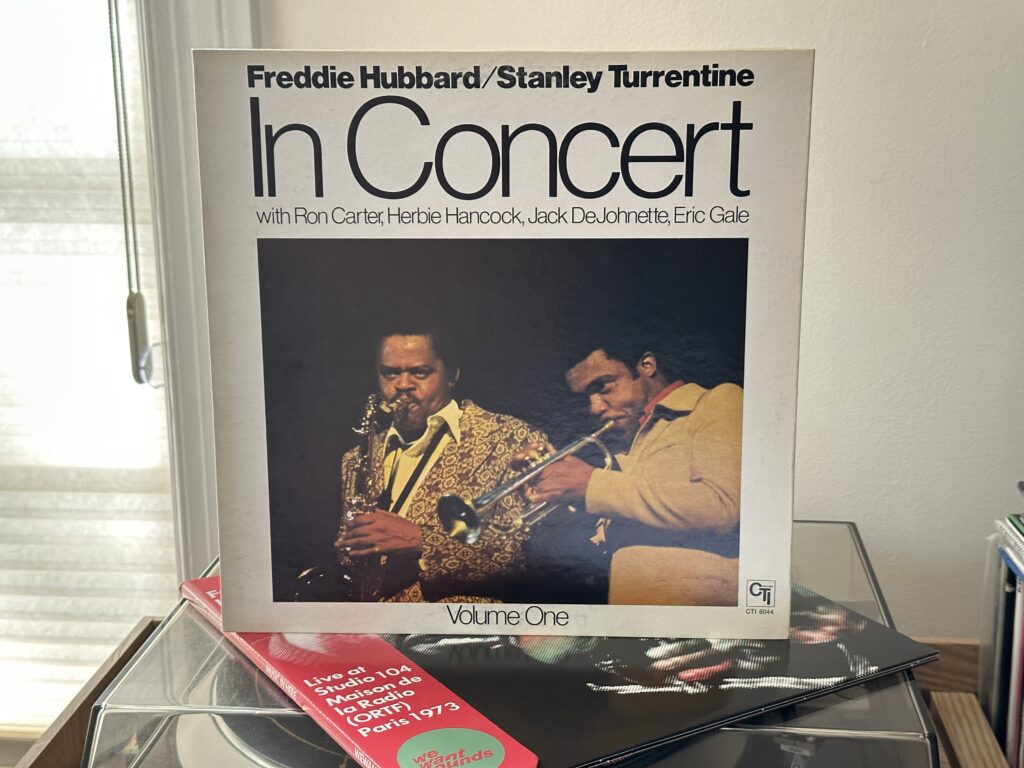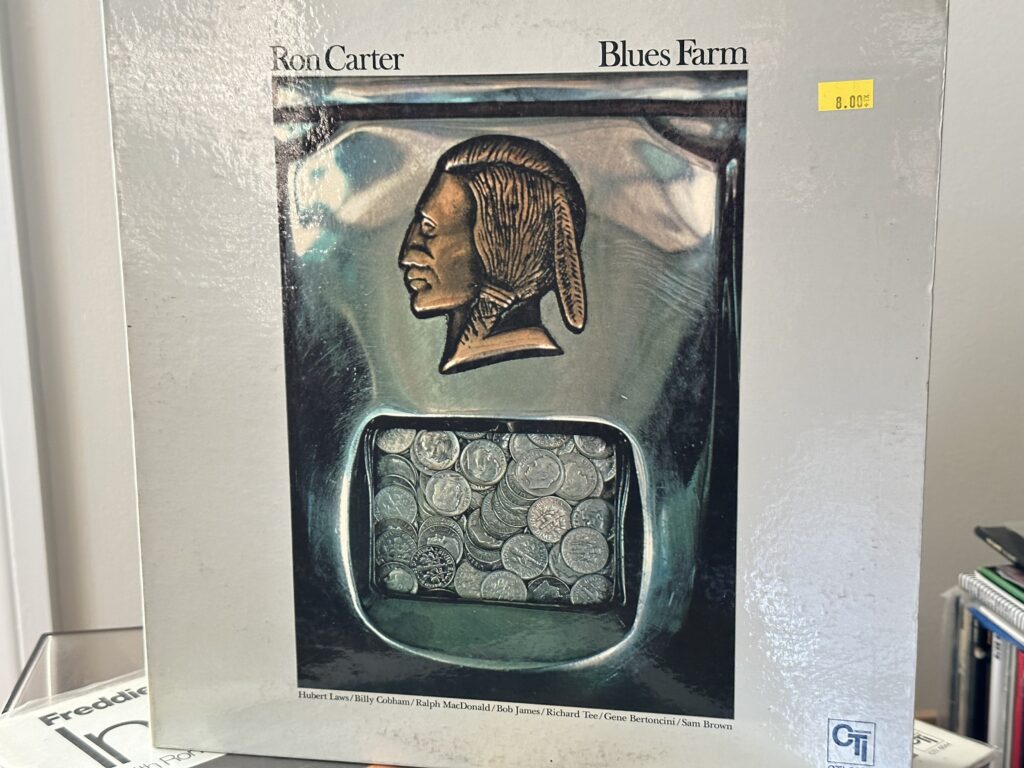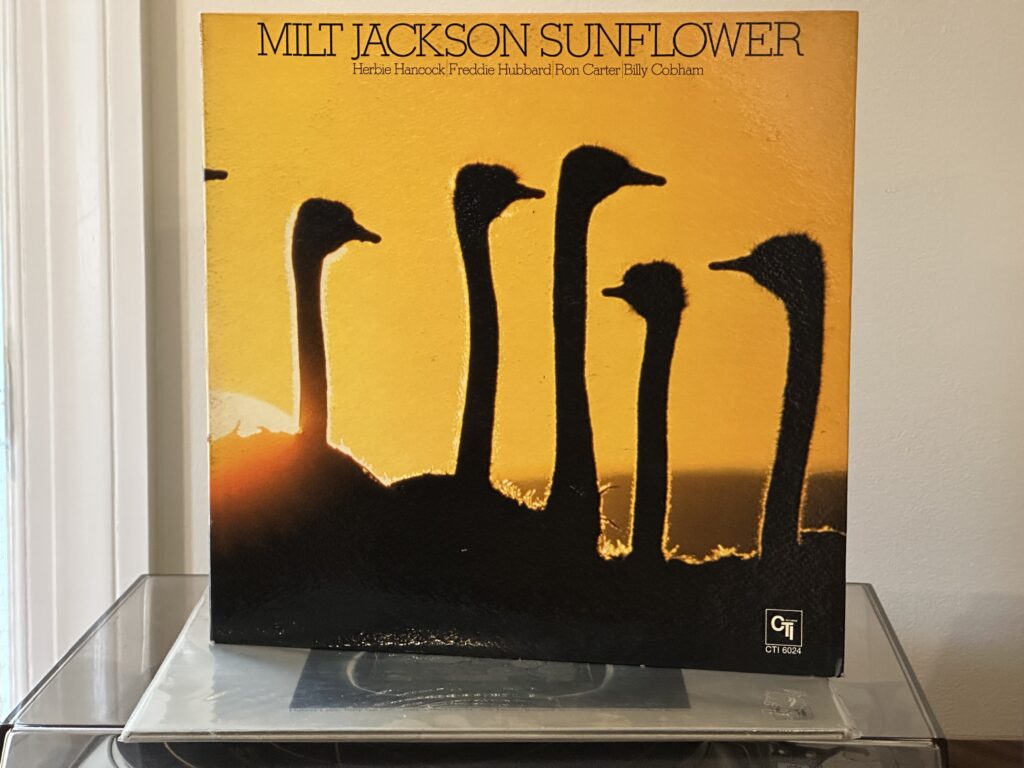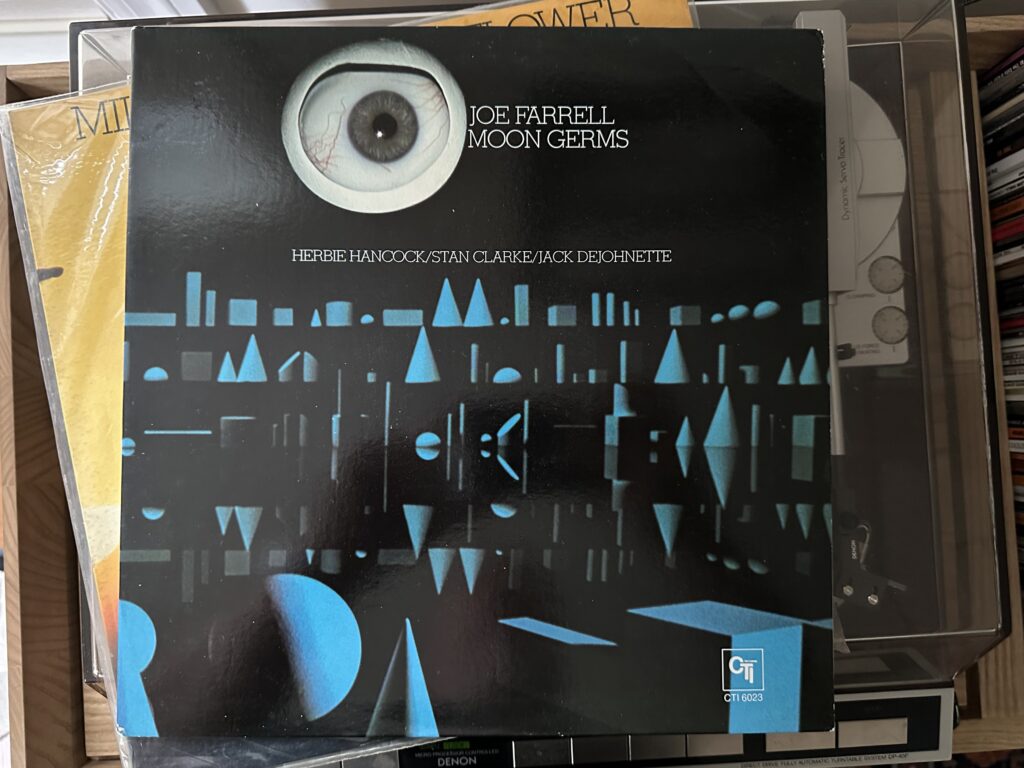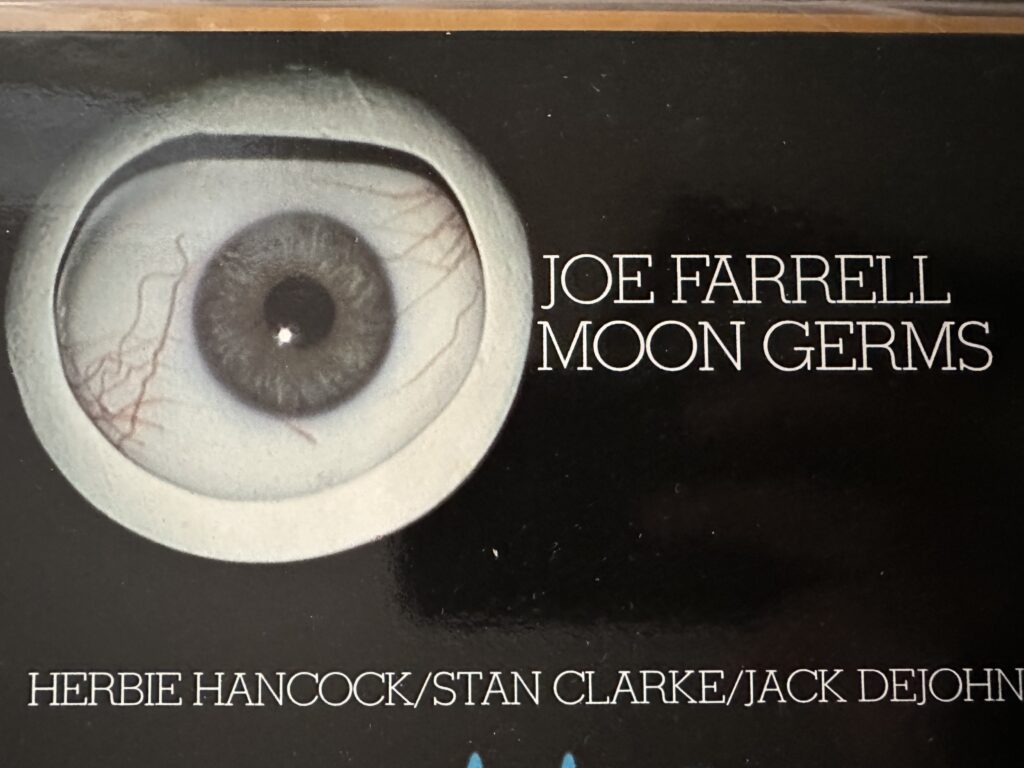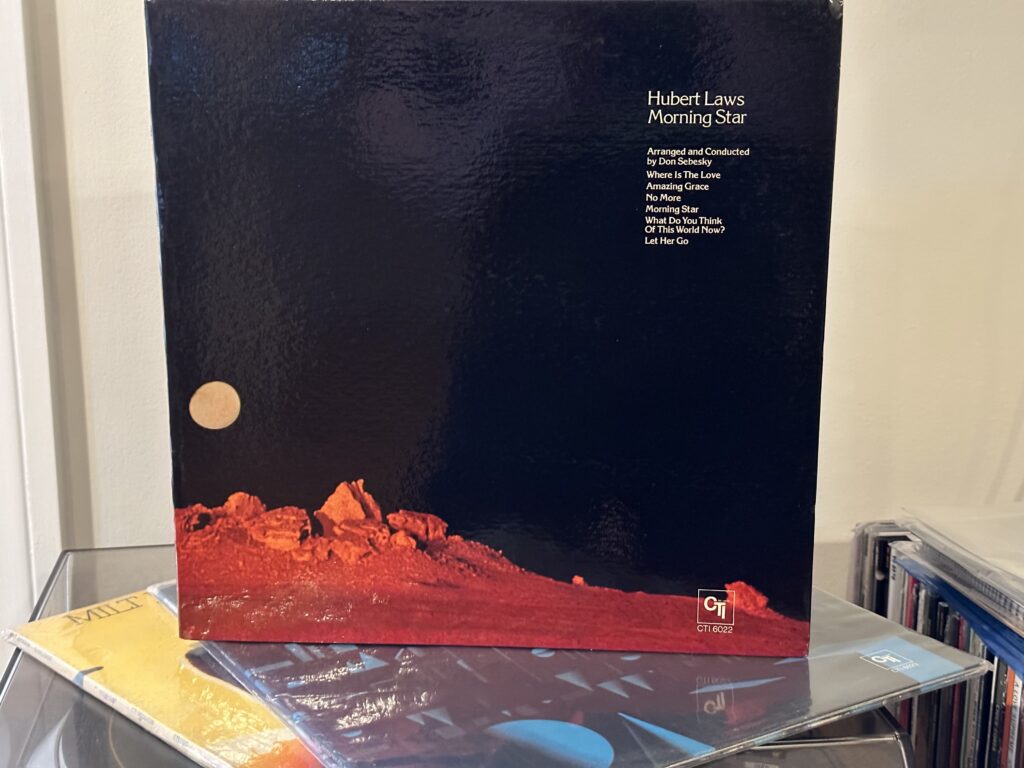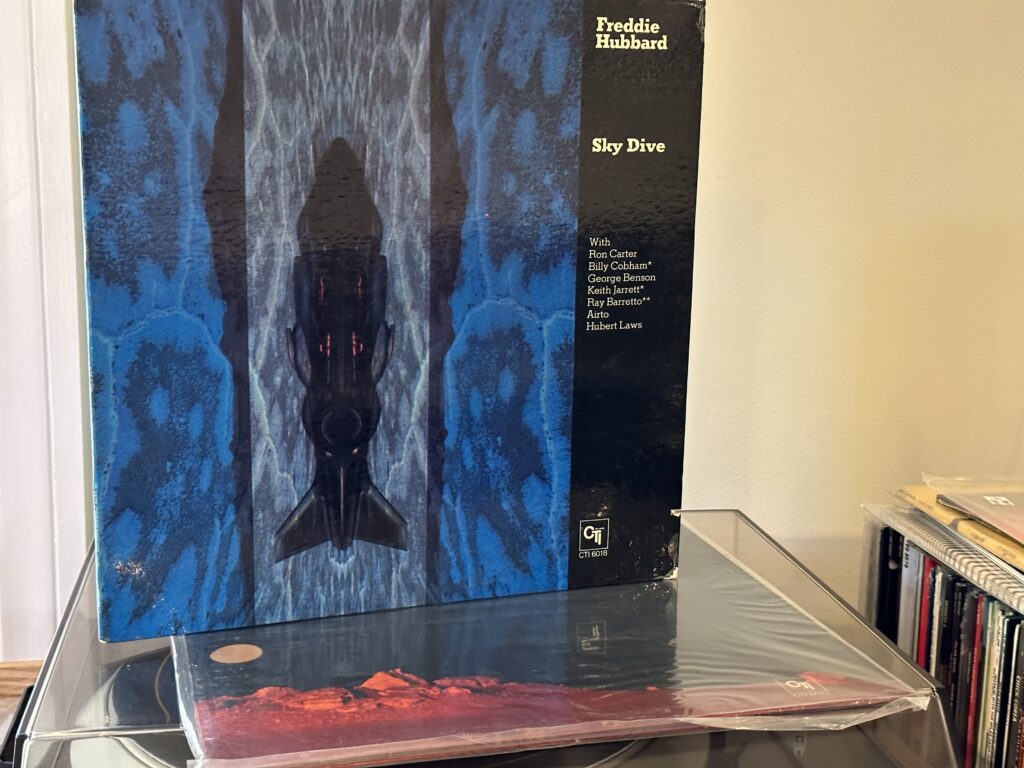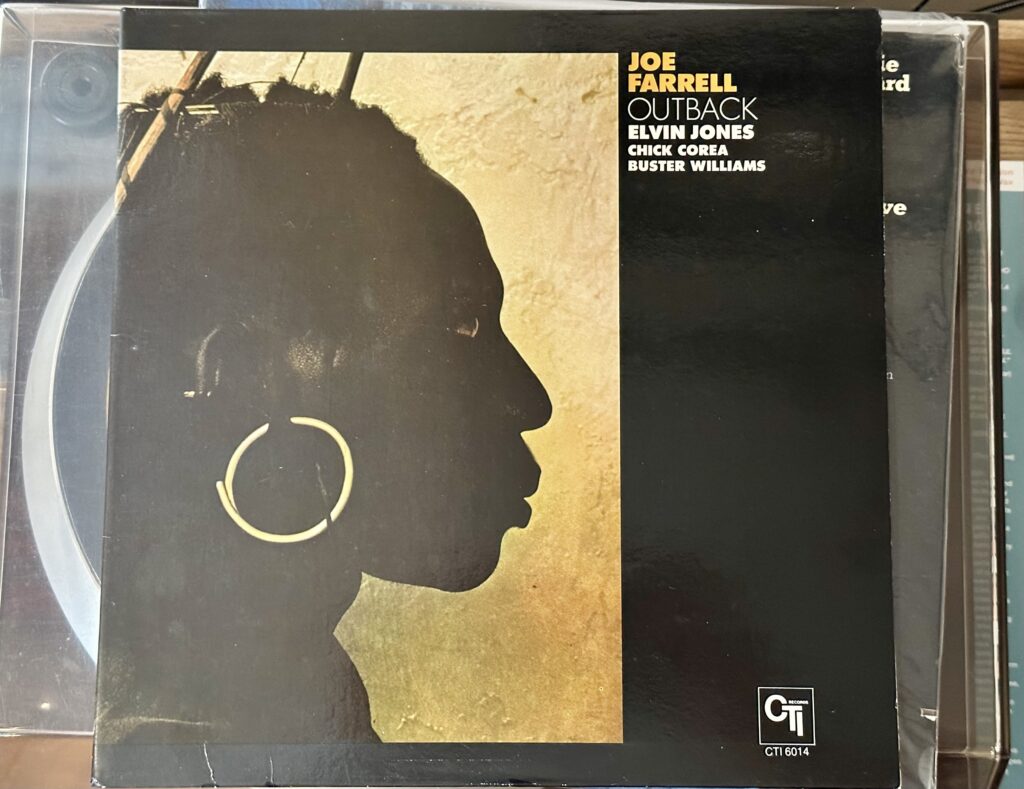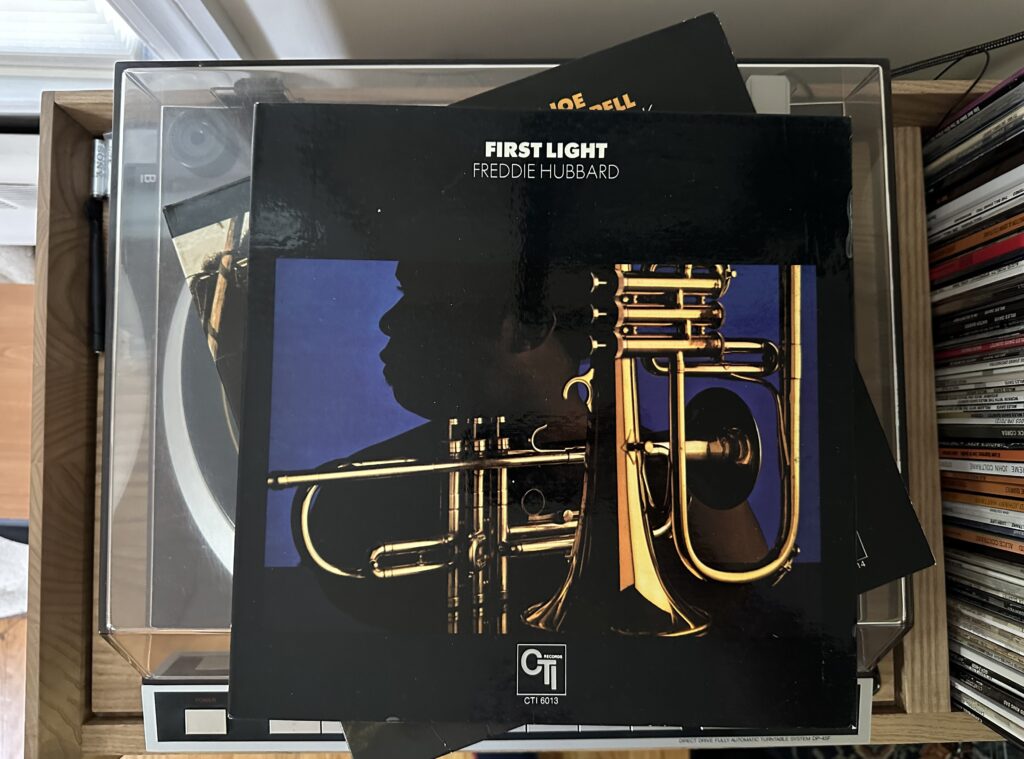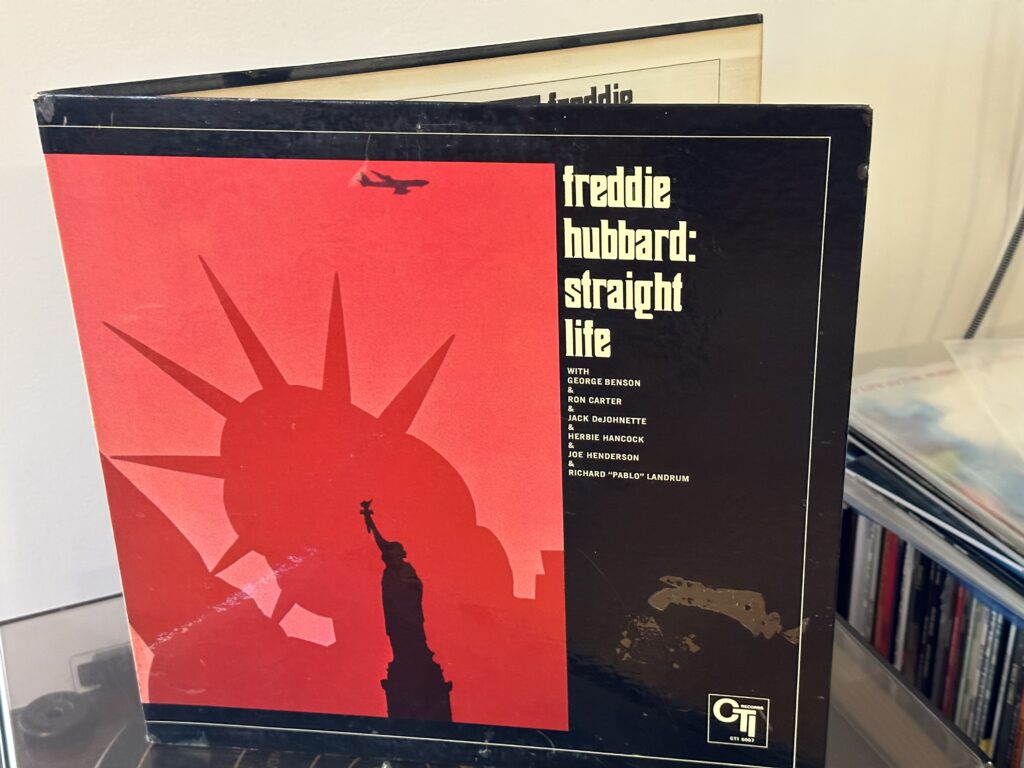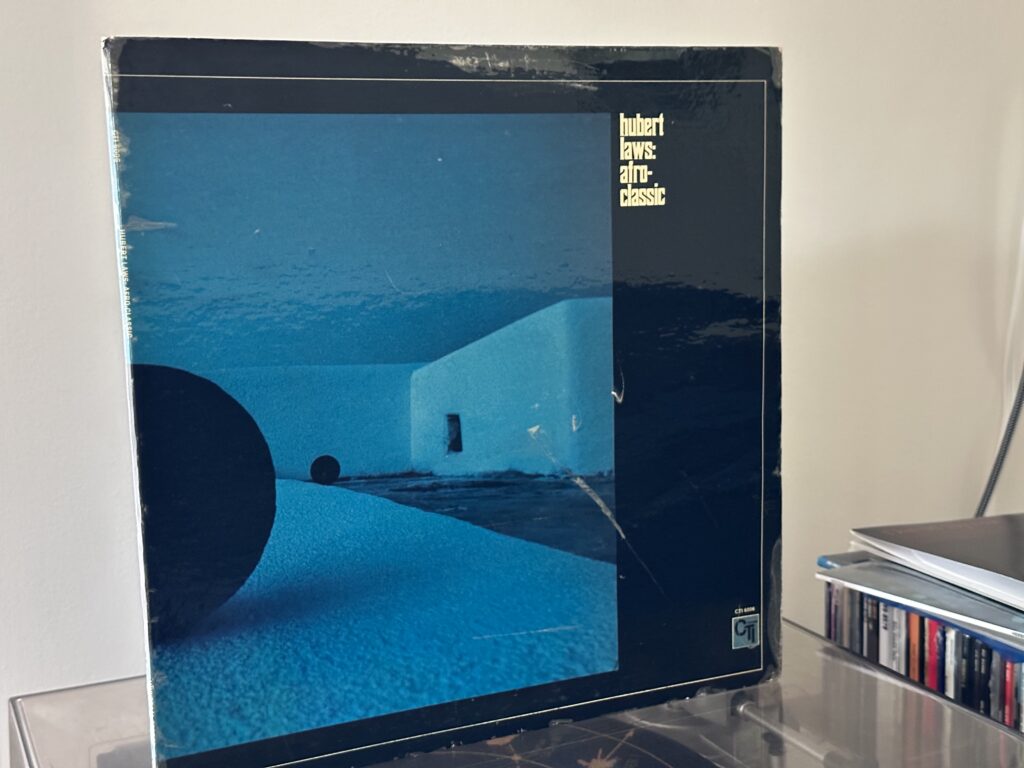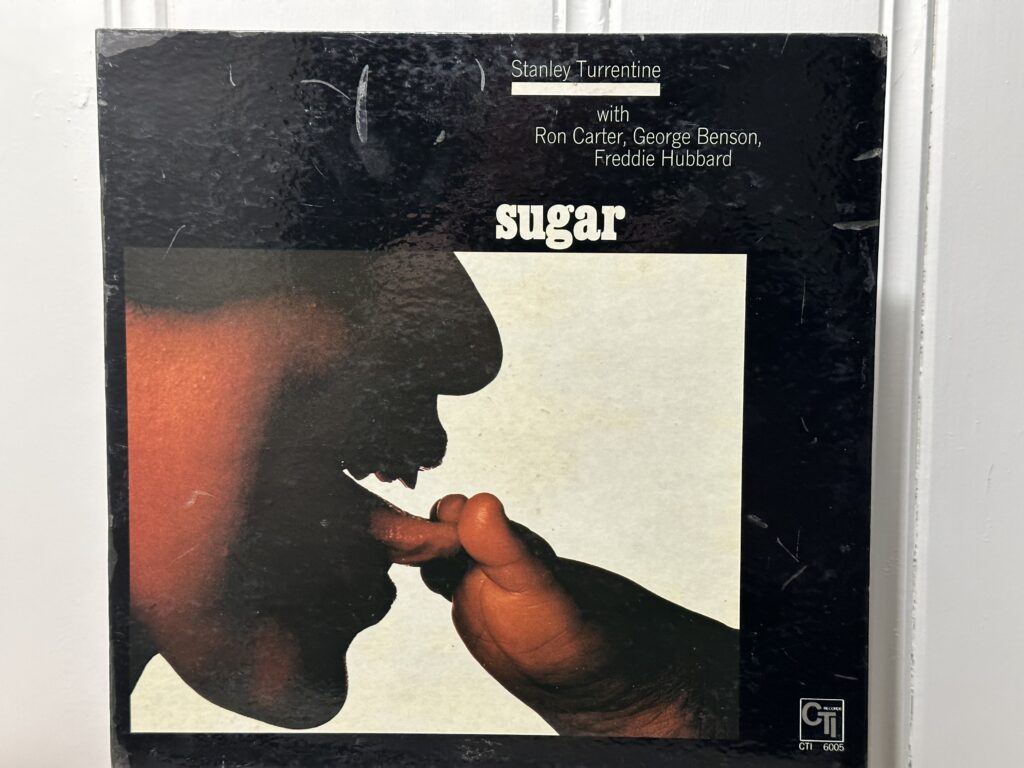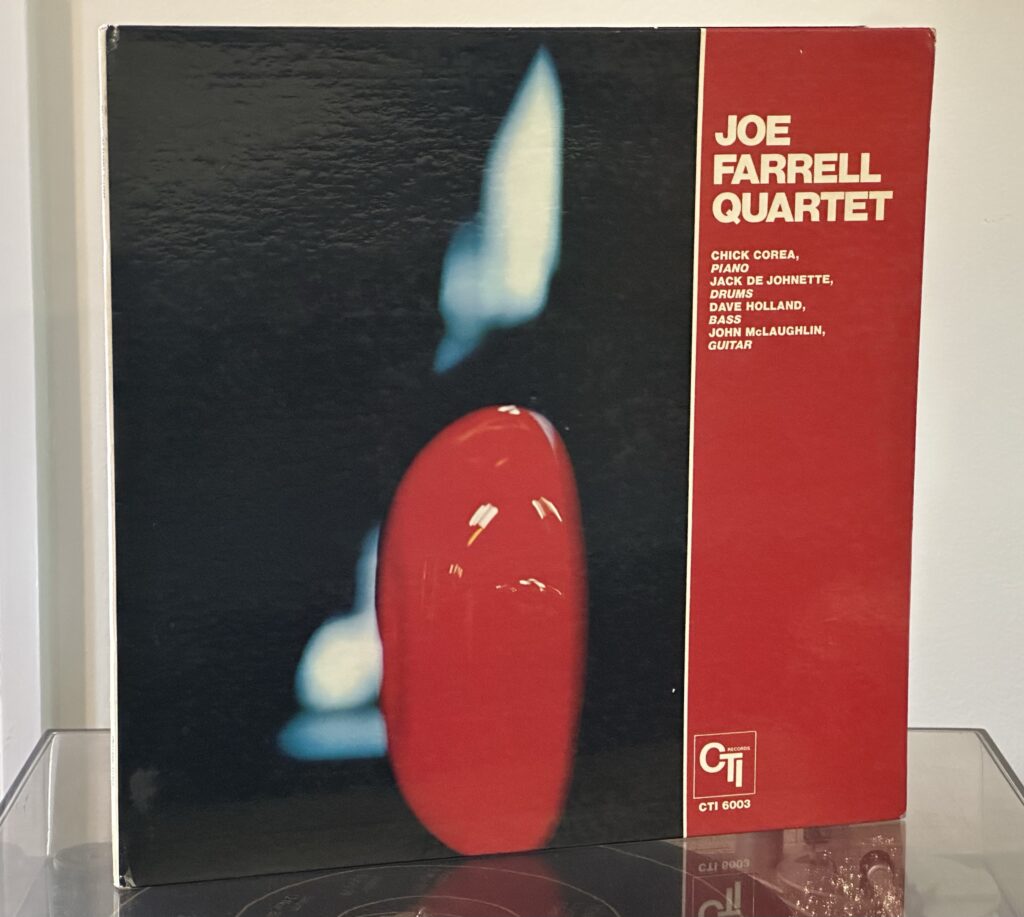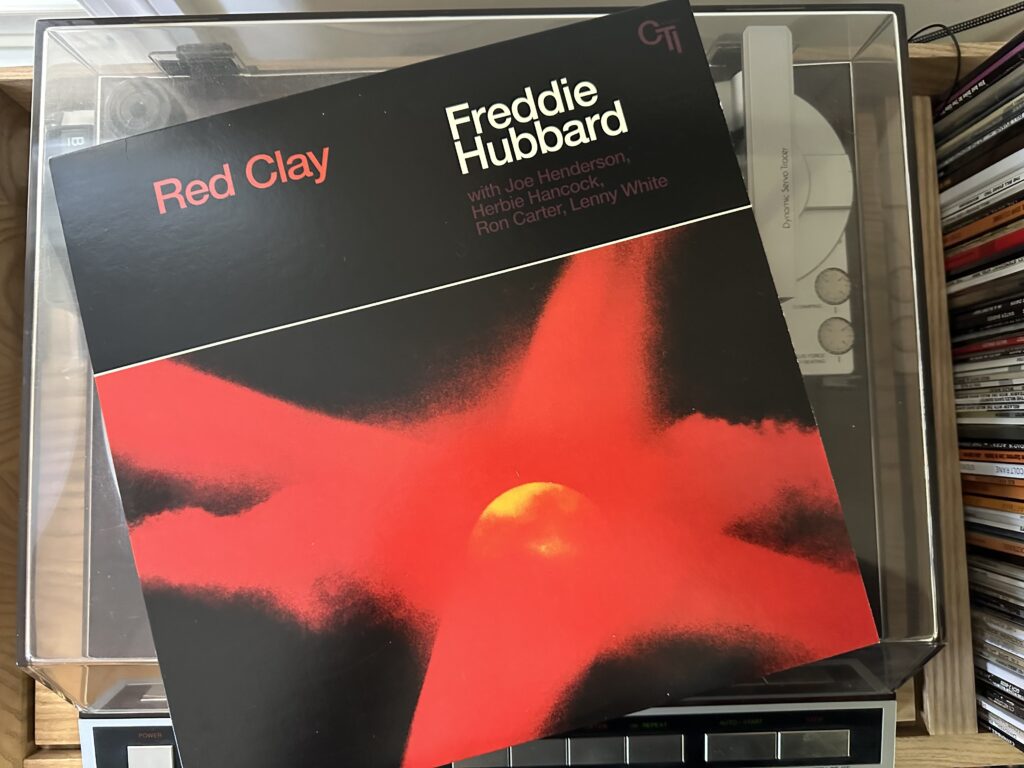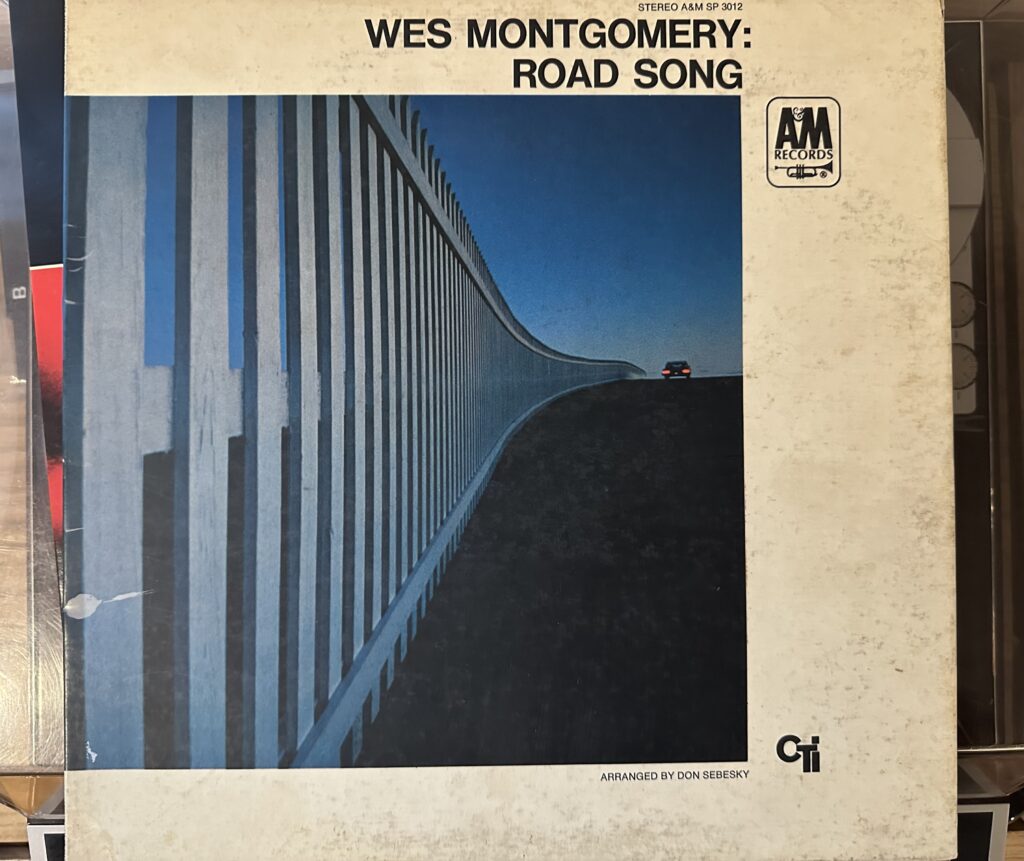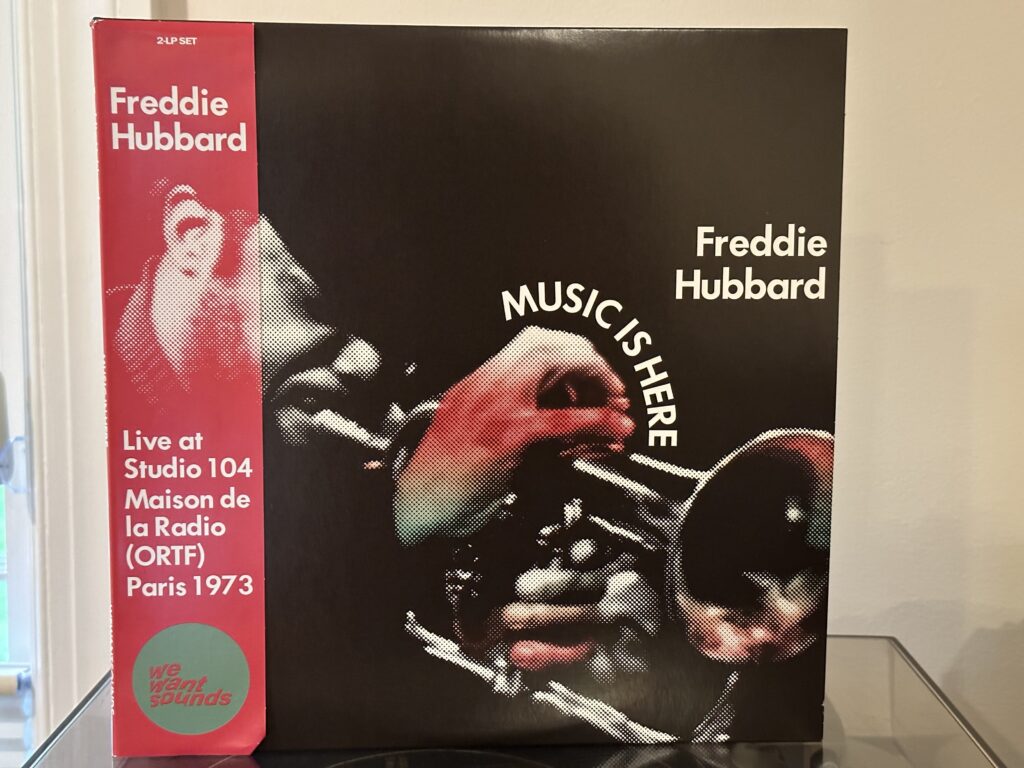
Album of the Week, July 8, 2023
I’m taking a small detour this week from our review of the CTI Records discography (through the lens of my personal collection) to check out a recently published live recording of Freddie Hubbard’s from 1973. Coming just weeks after Freddie Hubbard and Stanley Turrentine, In Concert Vol. 1, this is a completely different lineup of players and in many ways a different sound, but it’s all anchored by the greatness of Hubbard’s early-1970s compositions.
Hubbard recorded In Concert Vol. 1 on March 3 and 4, 1973 in Chicago and Detroit. This new set was recorded on March 25 live in Studio 104, Maison de la Radio (ORTF), Paris, with a new group of musicians. You won’t hear Ron Carter, Herbie Hancock or Jack Dejohnette on this session. Instead, Hubbard put together a touring band, his first “regular” quintet, who would perform and record with Hubbard both in the studio and on tour throughout the 1970s. On bass was Kent Brinkley, who had previously played with Monk Montgomery and Charles Tyler. Michael Carvin had previously appeared on drums with Doug Carn and Henry Franklin, but made his name with this band and went on to record almost 100 different records as a sideman. George Cables had played piano with Art Blakey and the Jazz Messengers and had appeared on Joe Henderson’s great Milestone Records recordings of the early 1970s. And Junior Cook was the eldest member of the group, having debuted on a 1958 Kenny Burrell recording and played with Burrell, Horace Silver, Blue Mitchell, John Patton and others through the 1960s.
True to the album version, “Sky Dive” opens the record with a statement from rhythm section that quickly segues into the opening melodic statement from the horn players. After the opening verses, Cook takes the first solo, and immediately displays the reason he’s on board; his playing is a fiery combination of Coltrane-inspired runs and Joe Henderson-style melodies. Brinkley takes the second solo. His bass solo stays in the more traditional bass octave instead of the piccolo range that Carter was beginning to favor, exploring multiple tones around the melody before settling back into the groove. Hubbard then finally enters at around the seven minute mark, playing a series of blisteringly fast runs around the theme. George Cables’ solo is a little low in the mix on the recording, but his improvisational model is clear as he takes a more mellow approach to the tune. The horns come back in after Cables’ single chorus solo. We don’t hear a lot from Carvin on the track aside from his precise cymbal work; he’s supportive but doesn’t raise his head above the fray. The overall impression the band leaves at the end of the track is affability.
That easygoing feel is shattered by the opening of “The Intrepid Fox,” which follows “Sky Dive” closely. If this tune was raucous on Red Clay, it’s almost apocalyptic here. As the horns lay into the tune, Carvin is let off the chain and creates a ruckus, followed closely by Cables providing an extended vamp of an intro. Just before the two minute mark the full band enters to state the theme. Hubbard takes the first solo here, keeping his altitude high throughout and throwing out sonic effects left and right. At about the 6 minute mark he essays a brief melodic improvisation but quickly returns to the sonic explorations. Cook takes over and makes up for any missing melodic exploration, taking the theme into several different modes while still reflecting Hubbard’s high improvisations. Cables has a more extended solo here but is still very low in the mix. His approach is harmonically similar to Herbie’s, and his solo illustrates the modal construction of the song—the melody is basically a pedal note on the fifth of the scale while the chords move underneath it. Carvin takes an extended solo that transitions into a meditation on the cymbals, inspiring a chuckle and some Dizzy Gillespie-esque vocal improvisations from Hubbard. The band comes back together for a quick recap of the tune and then hits it, leaving the audience clapping for more. It’s almost 23 minutes long but feels gone in a flash.
“Povo” starts out in an unexpectedly tender mood, again omitting the spoken intro from the album version on Sky Dive, but launching into funk overdrive courtesy of the indefatigable bass line from Brinkley. The whole rhythm section feels looser here, with Carvin’s fills bouncing against the elasticity of Cables’ keys. Hubbard and Cook render a playful take on the alternating horns of the main tune, with Hubbard biting off the ends of phrases and beginning to improvise against the melodic line even within the head. Cook again provides his trademark blend of melodic improvisation and Coltrane-like obligatos, hitting some Freddie-like high notes at the end of the solo. Hubbard provides some support under the third verse of Cook’s solo, but plays away from the microphone so as to leave Cook in the spotlight. Carvin takes twelve bars of funky drummer alongside Brinkley, then fades back until all we get is Brinkley’s bass, heavily distorted in the low end but very funky. The group comes back together at the end for a seriously funky finish, and the track ends with the audience clapping and calling for an encore.
The band returns to the stage at the end for a brilliant rendition of “First Light.” Out of the primordial soup of the abstract opening comes the continuo of the rhythm section, rocking back and forth between A♭minor and a E♭ diminished 7th suspension, which powers the verse throughout as the horns enter at around the four minute mark. Hubbard unleashes a blistering solo that combines some of his patented pyrotechnics with melodic improvisation around the base chords. At one point he lands on a bum note, but incorporates it brilliantly into the solo, landing on it repeatedly in a funk counterpoint. He then takes off into the stratosphere for a verse before bringing the pitch back down in a series of circling patterns, continuing to drop the “off” note (an augmented sixth) into the improvisation and using it to push the key higher. He even drops a little homage to Stanley Turrentine, echoing the latter’s quotation of “It Ain’t Necessarily So” in the Chicago concert three weeks prior. Finally concluding a seven minute long solo, Hubbard steps back at almost exactly the halfway point of the track, yielding the floor to Cook, who takes a solo turn on flute. Cook’s flute is a more aggressive voice than Hubert Laws’, but it’s still a respite from the energy of the track, and it’s only two choruses long. Cables takes the floor for a solo that alternates a counter melody with outbursts of the diminished 7th chord, extended transitions between the two, and general groove. Throughout the keyboard solo, Carvin’s drumming gets progressively looser, continuing to keep time while exploring different aspects of the rhythm coming from Cables. The band comes back together for one more chorus, then Hubbard plays a sort of extended outro, Sketches of Spain style, taking the main melody at a greatly stretched tempo but still dropping in flourishes while the rest of the band gets quieter, until he finally slowly sinks, seemingly into the earth, and finally into silence. Applause, one last statement of a “theme” for the band, and then the end.
In many ways this recording captured a turning point for Hubbard’s 1970s career. He was to make one more studio album with CTI Records; Keep Your Soul Together was released at the end of 1973 and featured Cook, Cables and Brinkley alongside Ron Carter, with Ralph Penland on drums, Juno Lewis on percussion, and Aurell Ray on guitar. After that he jumped to Warner Bros., where he made a series of highly commercial but critically panned records. He spent most of the late 1970s as a member of a new quintet with Herbie Hancock, Ron Carter, Tony Williams, and Wayne Shorter; we’ll hear about them in another column. He also was fighting a substance abuse problem, and suffered a lip injury in 1992 that effectively put an end to the high level of performance that characterized his greatest music.
With Hubbard’s departure from CTI, one of the main ingredients of their sound, the straight-ahead jazz core that he represented, was unavoidably diminished. Next time we’ll hear one of the elements that rose to take its place.
Listen: As with many bootlegged sessions there have been many versions of this set released over the years. While there’s no full stream of the released album (which features considerably cleaned up audio compared to the bootlegs), you can actually watch the live-in-studio concert on YouTube! Featuring “Straight Life” and “Here’s That Rainy Day” instead of “Sky Dive” and “Povo,” but dating from the same sessions, here’s a great view of Hubbard’s band in concert.

